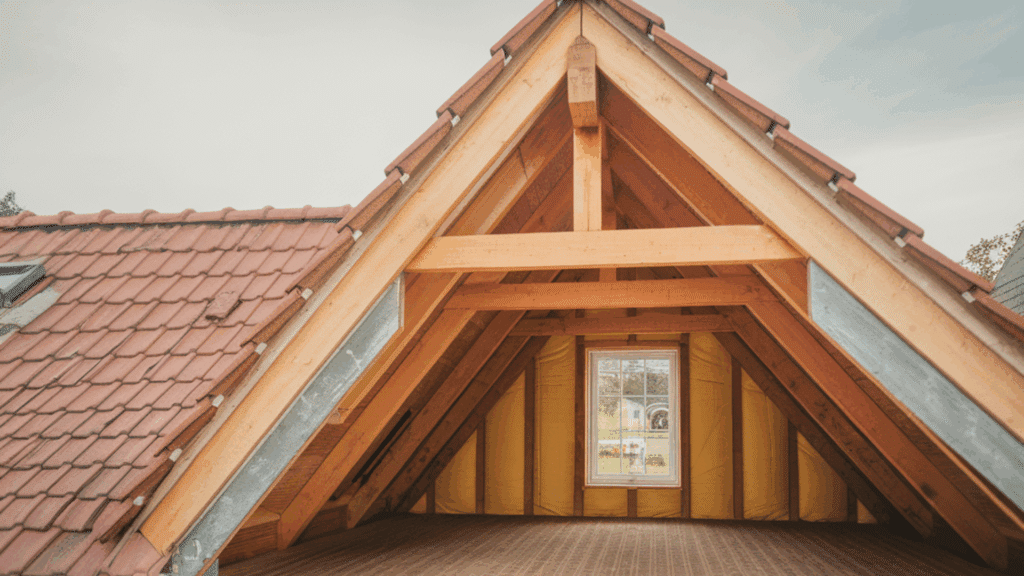A pitched roof is often seen on many homes and buildings. It gives a clean, classic look that people recognize right away.
The shape and angle of this roof set it apart from flat roofs. Many people hear the term roof pitch but are not sure what it means or why it matters.
Understanding the idea behind it can help make sense of how roofs are built and how they work.
This article explains the basics in clear terms and shows how this type of roof can affect the way a home looks and performs over time.
What is a Pitched Roof and Roof Pitch?
A pitched roof is a roof that slopes down from a central point or ridge, unlike a flat roof.
The slope allows rain, snow, and debris to slide off easily. This angle is known as the roof pitch, which shows how steep or flat the roof is.
Roof pitch is measured as a ratio, such as 4:12 or 6:12, meaning the roof rises 4 or 6 inches for every 12 inches of horizontal distance.
A smaller number means a gentler slope, while a larger number means a steeper roof. Roof pitches vary based on style, climate, and materials.
The right pitch affects drainage, weight support, and overall durability, making it a key part of roof design.
How Roof Pitch Affects Your Home

Roof pitch may seem like a small detail, but it has a big impact. The pitch of a roof changes how it looks, how it handles weather, and how it performs over time.
- Water drainage: A steeper roof pitch allows water to run off quickly, reducing leaks and water damage.
- Snow and debris: In snowy or rainy areas, a higher roof pitch helps snow and dirt slide off easily.
- Design and style: Roof pitch changes how a house looks. It can make it appear taller, wider, or more traditional.
- Material choice: Some roofing materials work better with certain roof pitches.
- Cost: Steeper roofs may cost more to build and maintain, but they often last longer.
Each of these factors shows why understanding roof pitch is useful for homeowners and builders alike.
Types of Pitched Roofs
There are many kinds of pitched roofs. Each has its own shape, benefits, and uses. Below are some of the most common types found in homes and buildings.
1. Gable Roof
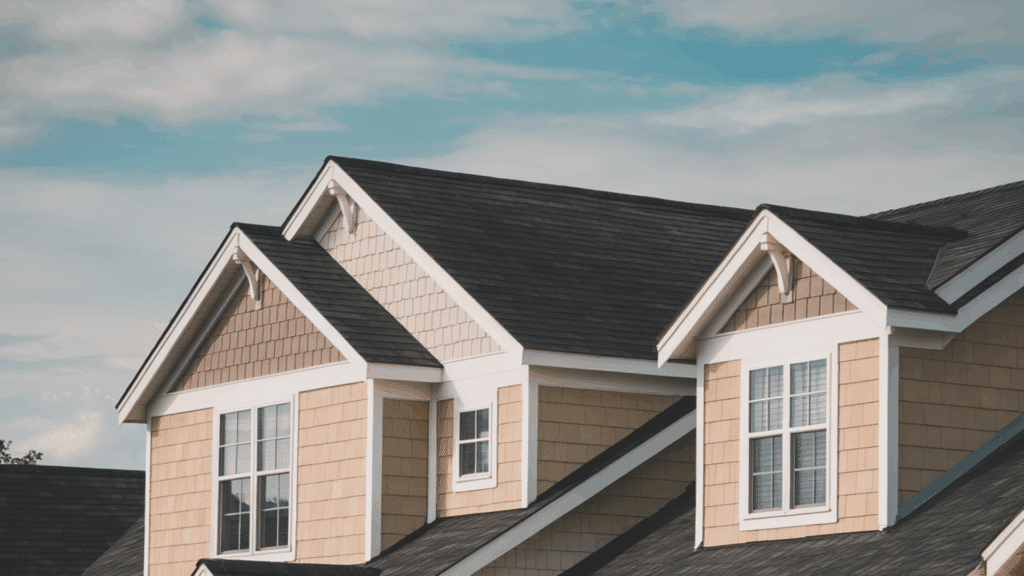
A gable roof is the most common type of pitched roof. It has two sloping sides that meet at a ridge, forming a triangle at each end.
This shape helps rain and snow slide off easily. Gable roofs are simple to design, affordable to build, and work well in areas with heavy rainfall.
They also allow good attic space and ventilation. However, they may not be the best choice for regions with strong winds, as the high ends can catch gusts.
2. Hip Roof
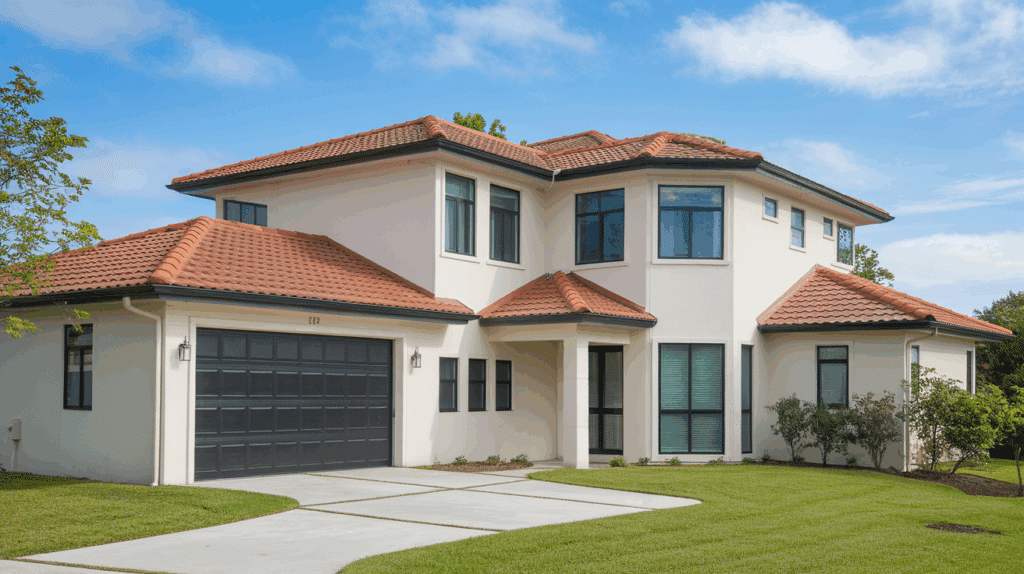
A hip roof has four sloping sides that meet at the top, creating a smooth, pyramid-like shape.
It is more stable than a gable roof because all sides slope down, giving it extra strength in windy conditions. This makes hip roofs ideal for stormy or coastal areas.
They are stylish and provide a clean, balanced look to any home. On the downside, they are a bit more complex to build and may cost more.
3. Gambrel Roof
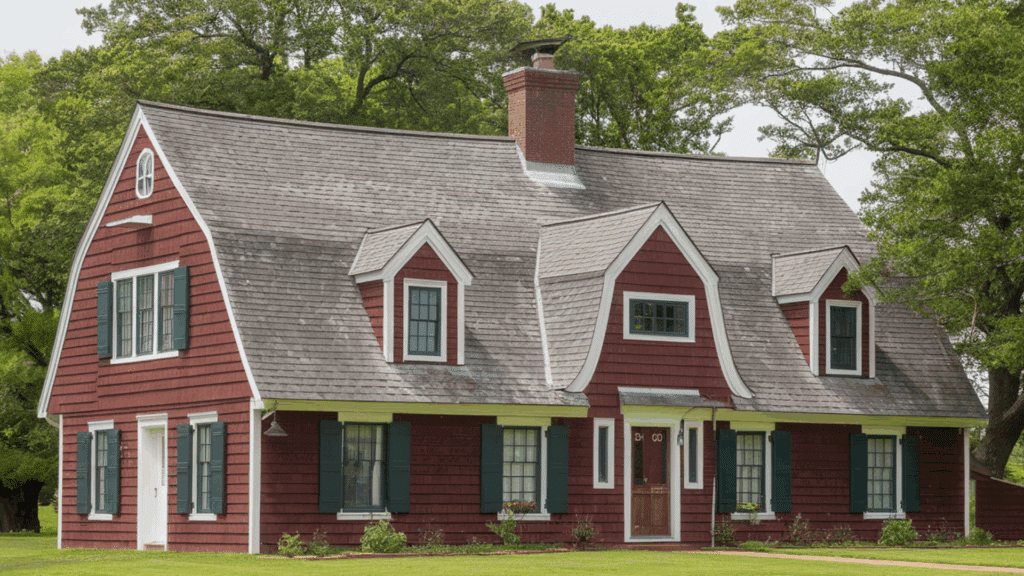
A gambrel roof is often seen on barns and country homes. It has two slopes on each side, a steep lower slope and a gentler upper slope.
This design creates extra attic or loft space without adding more walls. It’s perfect for homeowners who want to use the upper level for storage or living space.
Gambrel roofs give buildings a classic, traditional look, but need regular care because the many angles can collect water if not sealed properly.
4. Mansard Roof

A mansard roof has four sides, each with two slopes. The lower slope is very steep, while the upper part is nearly flat.
This French-style roof is often used to create more living space under the roof, such as an attic bedroom or small apartment.
Mansard roofs give homes a stylish and elegant appearance. They are common in cities where space is limited but vertical expansion is possible. However, the complex design means higher building and maintenance costs.
5. Shed Roof
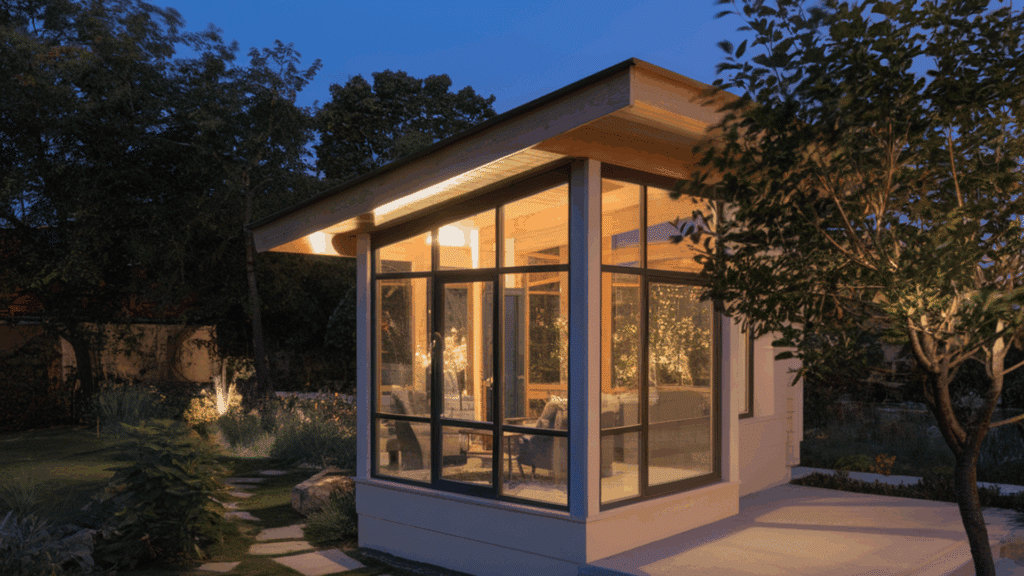
A shed roof has only one slope. It’s one of the simplest roof designs and is often used for home extensions, garages, or modern-style houses.
Its clean, single-slope shape allows for easy water drainage and quick construction. Shed roofs are great for solar panels because of their flat, angled surface.
They are also cost-effective and work well in areas with light rainfall. However, they may not suit homes that face heavy snow or wind.
6. Saltbox Roof
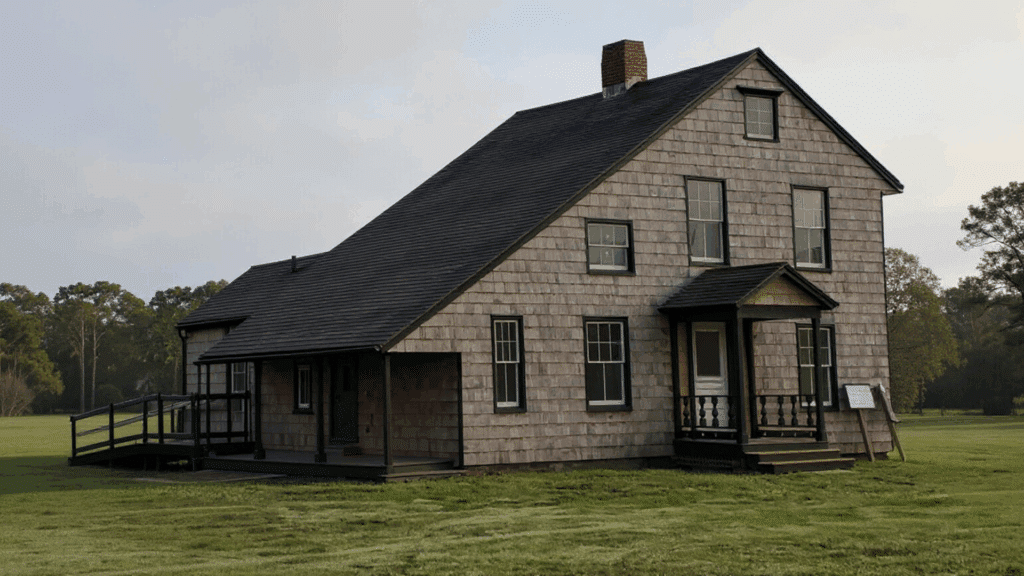
A saltbox roof has one long slope and one short slope, creating an uneven but attractive shape.
It gives the home a charming, traditional look and helps water drain quickly from the longer side. Saltbox roofs were first used in colonial architecture to expand homes without adding new walls.
The sloped design makes them resistant to heavy rain and snow. Though they have a unique look, the uneven ceiling inside can limit attic space.
7. Butterfly Roof
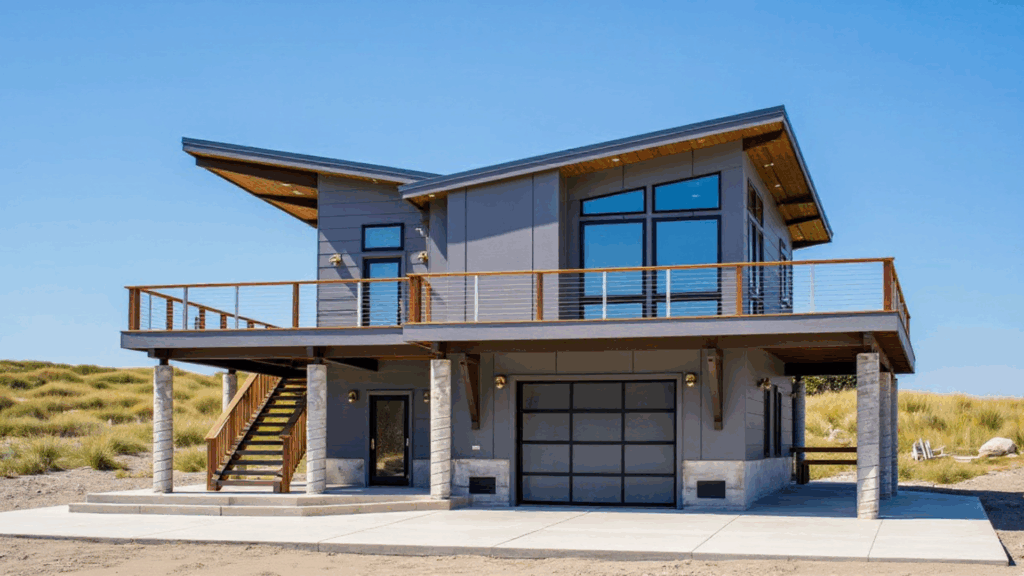
A butterfly roof has two slopes that meet inward at the center, forming a “V” shape like butterfly wings.
This modern roof style is often chosen for its eye-catching design and eco-friendly use. The center valley can collect rainwater for reuse, making it popular in sustainable homes.
Butterfly roofs also allow tall windows on the sides, letting in plenty of natural light. However, the inward slope means proper drainage is important to prevent leaks.
Common Roofing Materials for Pitched Roofs
The type of material used on a pitched roof affects how long it lasts, how it looks, and how much it costs. Each material has its own benefits and is suited for certain roof pitches and climates.
| Material | Description | Best For | Key Benefits |
|---|---|---|---|
| Asphalt Shingles | Most common roofing option; easy to install and affordable. | Moderate roof pitches and most climates. | Cost-effective, widely available, and with many color choices. |
| Metal Roofing | Made from steel, aluminum, or copper panels or sheets. | Low to steep roof pitches; rainy or snowy regions. | Long lifespan, lightweight, energy efficient. |
| Clay or Concrete Tiles | Heavy, durable tiles that give a classic look. | Steep roofs in hot or dry areas. | Fire-resistant, long-lasting, stylish design. |
| Wood Shingles or Shakes | Natural wood pieces cut or split for roofing. | Medium to steep roof pitches; dry climates. | Natural look, good insulation, and eco-friendly. |
| Slate Tiles | Natural stone tiles are used on steep roofs. | Steep pitches and older-style homes. | Very durable, elegant appearance, and low maintenance. |
| Synthetic Roofing (Rubber/Plastic/Composite) | Made to mimic wood or slate but lighter. | Various pitches; modern homes. | Lightweight, durable, and less costly than natural materials. |
Roof Pitch Codes and Standards
Building codes often include rules about roof pitch. These rules ensure safety, proper drainage, and long-lasting roofs.
For example:
- Roofs in snowy areas may need a higher pitch for safety.
- Flat or low roofs must use special waterproof materials.
Checking local codes before building or changing a roof helps avoid problems later.
How to Choose the Right Roof Pitch
When deciding on roof pitch, several factors should be considered:
- Climate: Choose a steep pitch for heavy rain or snow, and a low pitch for dry or warm areas.
- Budget: Steep roofs cost more, but they often last longer.
- Design: Pick a pitch that matches the home’s style.
- Material: Make sure roofing materials fit the chosen pitch.
- Purpose: If attic space or insulation is needed, go for a steeper roof.
Talking with a roofing expert can help find the best pitch for your home.
Conclusion
A pitched roof is a classic and trusted roof design that adds both style and strength to a home. Its angle, or roof pitch, plays a big role in how the roof looks and performs.
A well-planned pitched roof can last for years with the right care and maintenance. It not only protects the home but also adds beauty and value.
For anyone planning a new roof or renovation, learning about pitched roofs is a smart first step.
Learn more about your roof’s slope and how choosing the right design can make your home safer, stronger, and more durable.

